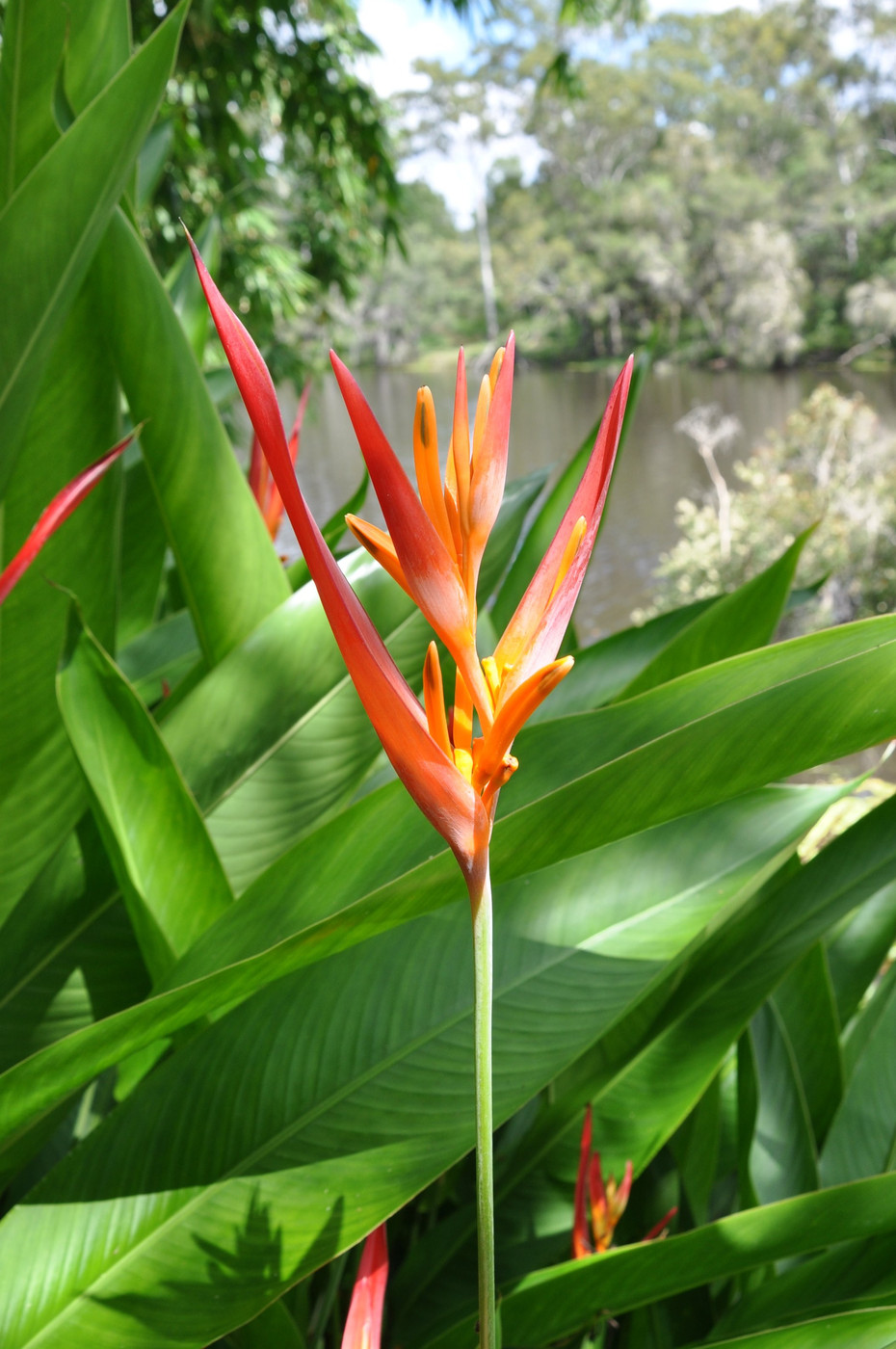

In the words of the medic and botanist, William Roxburgh (1751-1815), whose research on the spikenard is also discussed here, Jones's method achieved what 'mere botany' with its focus on the technical arrangement of plants could not do.Heliconia psittacorum botanical form with the typical inflorescence © Giuseppe Mazza
The result was a botanical identification that forced the jat _ āmāṁsī to travel across epistemologies and manifest itself as an object of colonial natural history. The paper follows Jones through his textual and 'ethnographic' explorations, as he creates both a Linnaean plant-object-Valeriana jatamansi Jones-and a mode of plant description that encoded the 'native' experience associated with a much-desired therapeutic commodity.
Philology, for Jones, was of a piece with language study and ethnology, and undergirded by observational practices based on trained seeing, marking a continuity between his philological and botanical knowledge making. This paper discusses Jones's philological method for identifying the jat _ āmāṁsī of the Sanskrit verse lexicon, the Amarakośa, and materia medica texts, a flowering plant with important medicinal properties and great commercial value, as the 'Spikenard of the Ancients'. The question serves here as a point of entry into Jones's method for creating culturally specific plant descriptions to help locate Indian plants in their Indian milieu. 'What is Indian Spikenard?', asked the eighteenth-century orientalist, Sir William Jones (1746-1794), in a famous paper, 'On the Spikenard of the Ancients,' published in Asiatick Researches, Volume II (1790). In fact, more research is needed to pinpoint when and where various elements of the legend originated and how (and how far) they spread, especially for the time after the 12th century. Our findings bring an important corrective to many folkloristic assumptions about the mandrake legend that have been handed down and accepted at face value for years. We base our research strictly on historical documents (illustrations, literary and botanical/pharmaceutical texts) carefully correlated in time. 500 to 1500, showing that not all concepts we know today were associated with the plant at any given time or place in the past. Our paper stresses the importance of distinguishing different stages in the mandrake legend in the centuries from ca.

A major misconception about the Middle Ages and the era directly preceding it is an assumption that the different elements of the mandrake legend were always widespread and well-known. This paper demonstrates how the contemporary legend about mandrake plant evolved from classical through early-modern times.


 0 kommentar(er)
0 kommentar(er)
